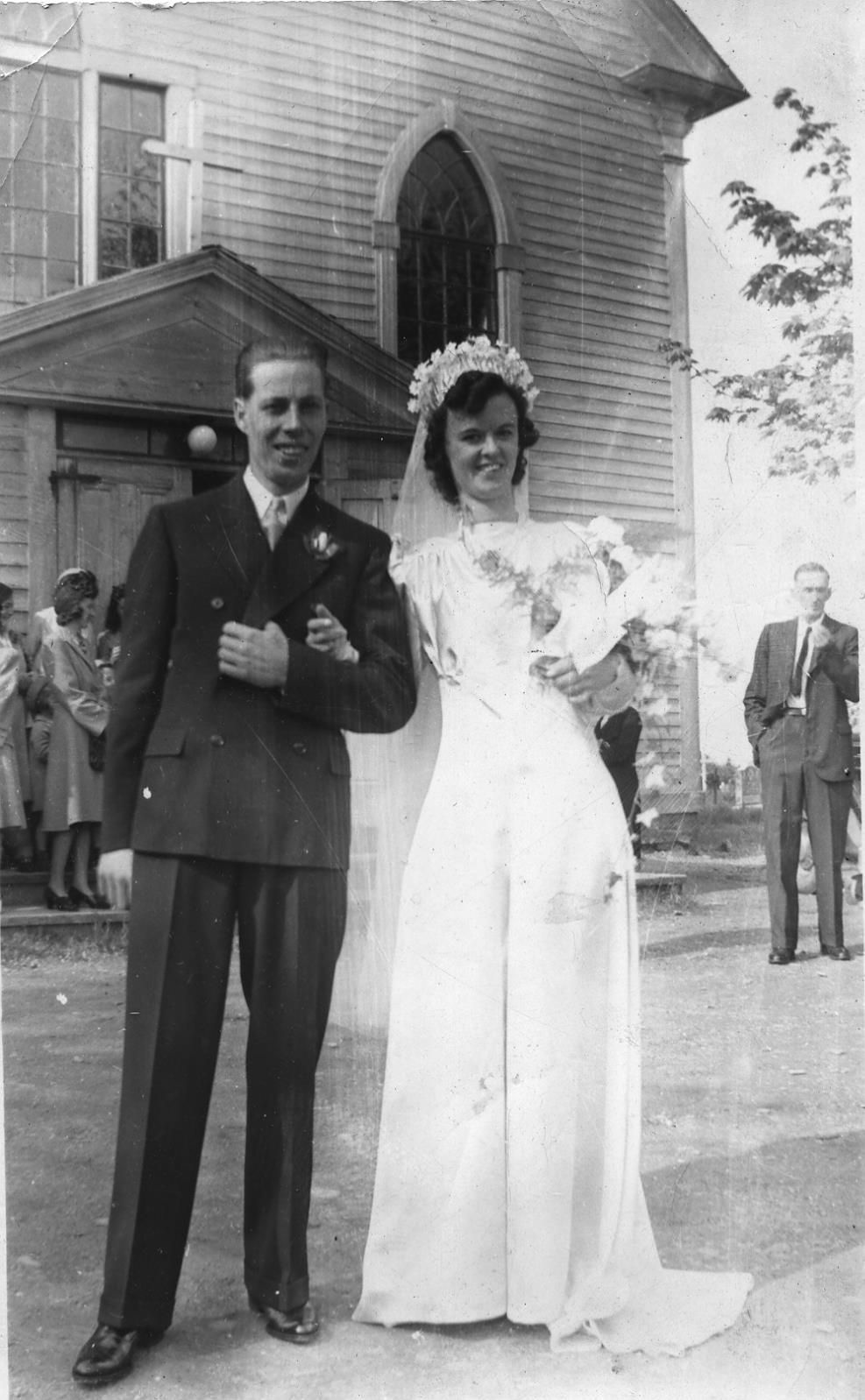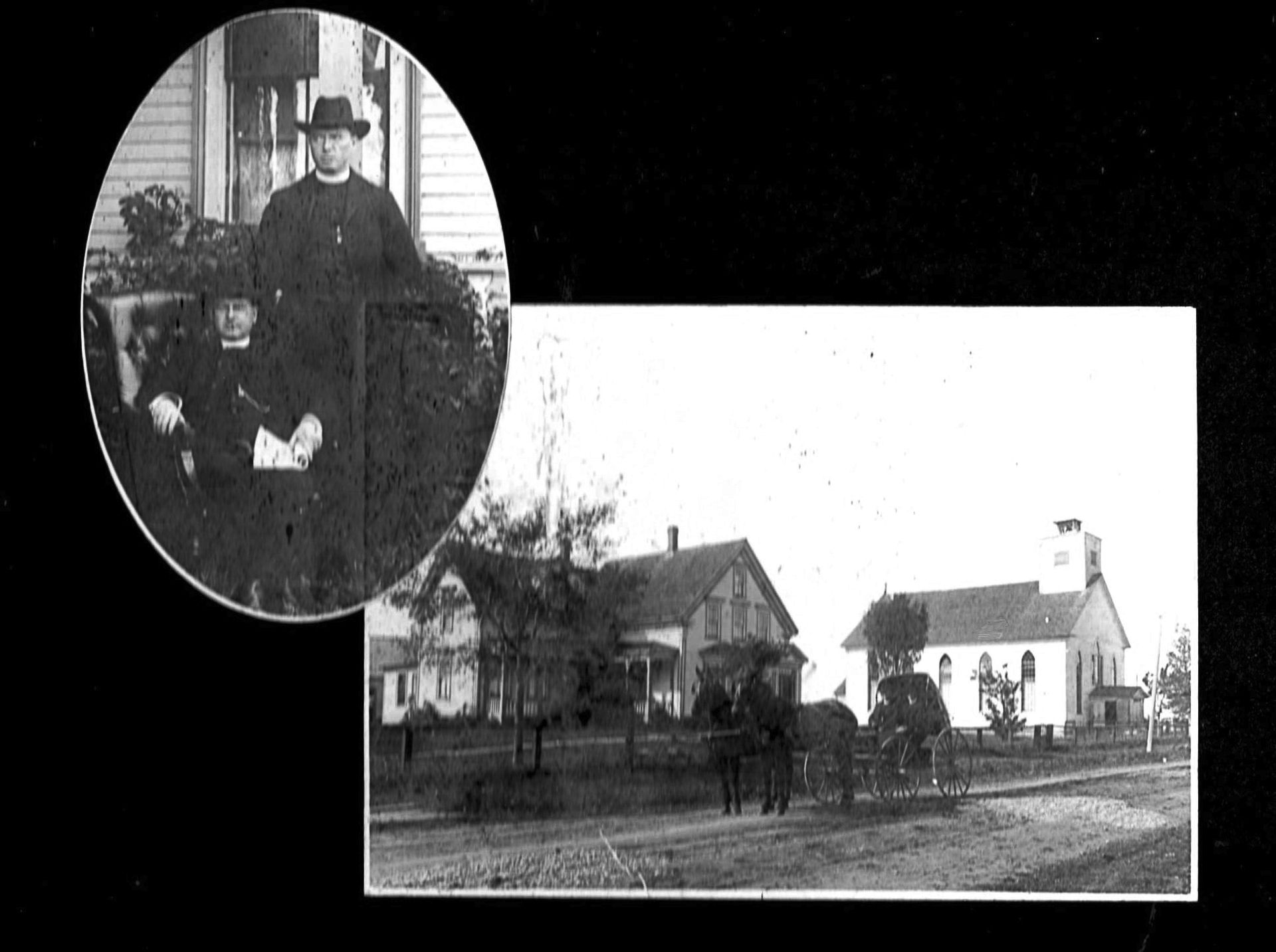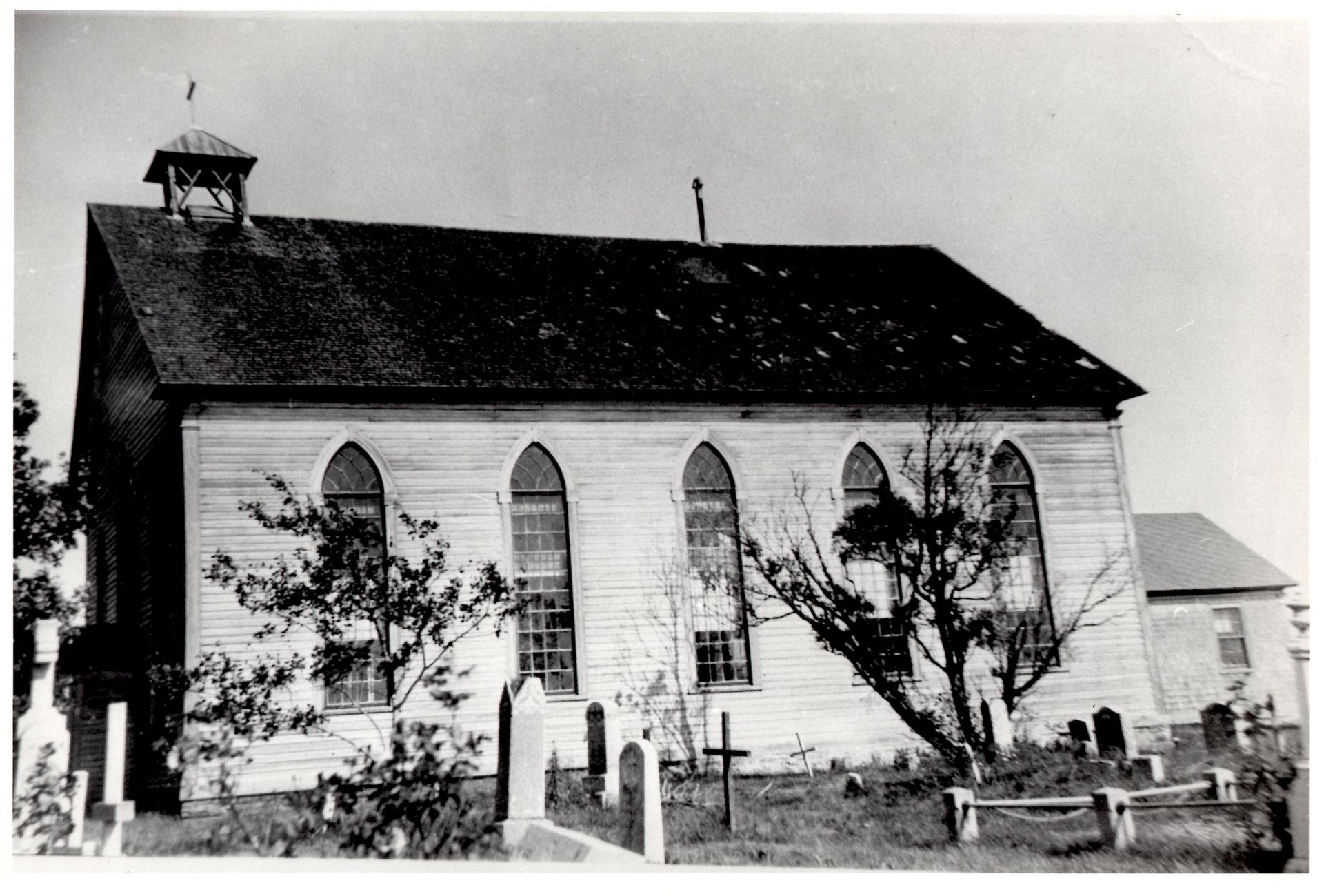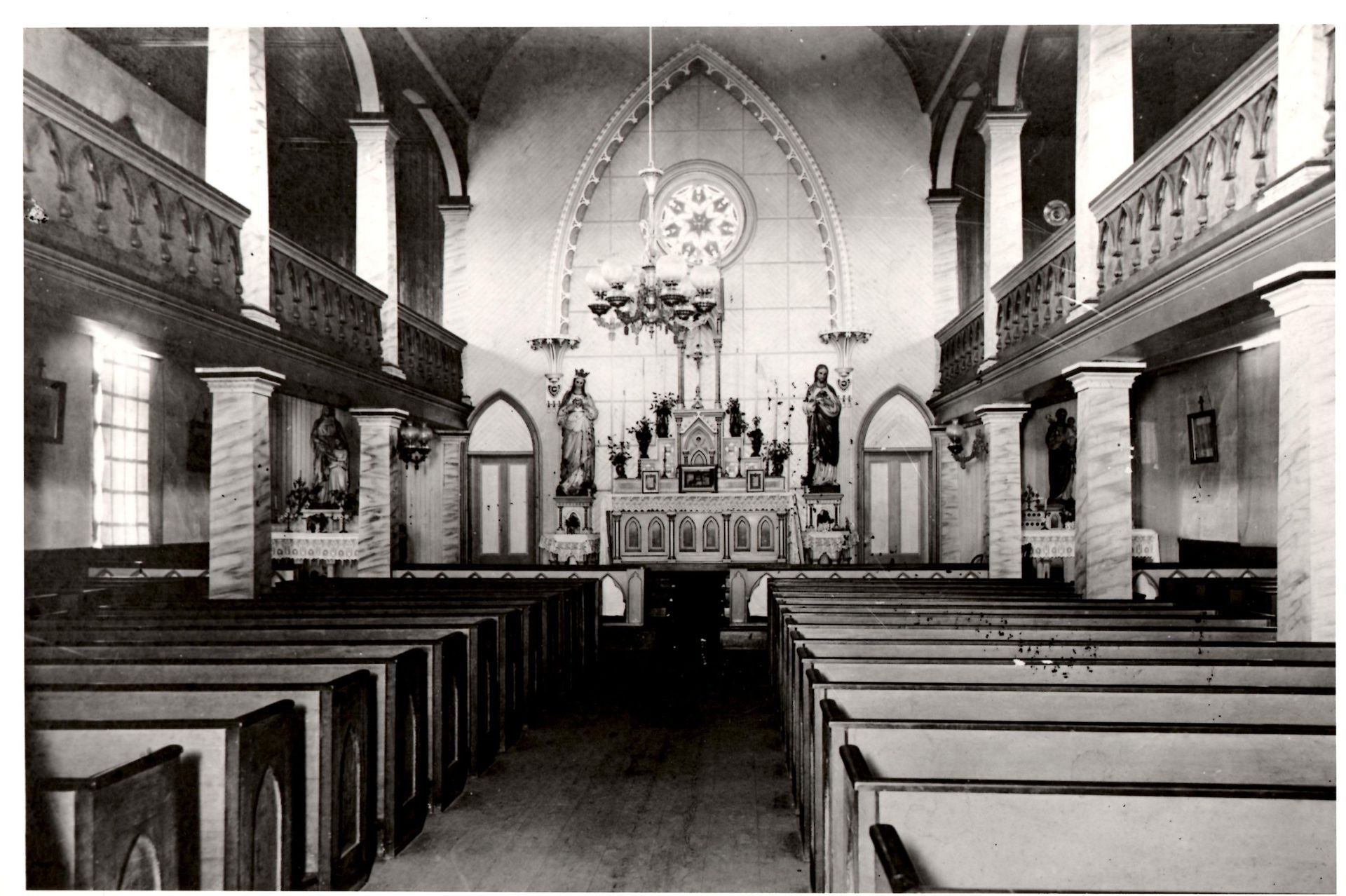Un héritage de foi / A Legacy of Faith
Bénie par Monseigneur Walsh en 1853, la première église de Saint-Bernard a servi la paroisse jusqu'en 1942. Après la bénédiction de la nouvelle église, l'édifice original a été déconsacré et transformé en centre communautaire jusqu'à environ 1960. Aujourd'hui, un monument commémoratif et le cimetière demeurent en témoignage de son histoire.
Blessed by Monseigneur Walsh in 1853, the first church at Saint-Bernard served the parish until 1942. After the blessing of the new church, the original building was deconsecrated and repurposed as a community center until around 1960. Today, a commemorative monument and the cemetery remain as a testament to its history.
La Première Église, 1850 - 1853
La paroisse de Saint-Bernard est au cœur du premier établissement de Baie-Sainte-Marie, incluant des zones comme Île-à-Piau, Pointe-à-Major et L’Anse-des-LeBlancs. C’est là que le premier enfant est né et baptisé en 1768, que les premiers mariages ont eu lieu après le retour de l’exil, et où les premières sépultures ont eu lieu à Île-à-Piau et plus tard à Pointe-à-Major. Les racines de la paroisse sont profondes, avec la première église de Saint-Bernard construite en 1853, marquant un moment clé dans la vie religieuse et culturelle de la communauté.
The First Church, 1850-1853
Saint-Bernard Parish is the heart of Baie-Sainte-Marie’s early settlement, including areas like Île-à-Piau, Pointe-à-Major, and L’Anse-des-LeBlancs. It’s where the first child was born and baptized in 1768, the first marriages took place after the return from exile, and the first burials were held at Île-à-Piau and later Pointe-à-Major. The parish's roots are deep, with the first Saint-Bernard Church built in 1850, marking a significant milestone in the community’s religious and cultural life.
Paroisse Saint Bernard
Le premier établissement de Baie-Sainte-Marie et les débuts de la vie religieuse pour ses habitants ont eu lieu dans les limites de ce qui est aujourd'hui la paroisse de Saint-Bernard : Île-à-Piau, Pointe-à-Major et L’Anse-des-LeBlancs se trouvent toutes dans cette paroisse. C'est dans cette paroisse que le premier enfant (Joseph Dugas) est né (1768) et a été baptisé à Baie-Sainte-Marie, et où les premiers mariages ont été bénis après le retour de l'exil. Les premières sépultures ont eu lieu à Île-à-Piau (1755-1756) puis plus tard à Pointe-à-Major.
Bien que tous ces événements se soient déroulés dans les limites modernes de la paroisse de Saint-Bernard, la première paroisse organisée à Baie-Sainte-Marie fut Sainte-Marie (Church Point, Pointe-de-l’Église).
Une église n’a été construite à Saint-Bernard qu’en 1853; avant cette date, les paroissiens étaient desservis par les prêtres de la paroisse Sainte-Croix à Plympton et de la paroisse Sainte-Marie à Church Point (Pointe-de-l’Église). La construction de la première église de Saint-Bernard a eu lieu entre 1850 et 1853. Monseigneur William Walsh, archevêque de Halifax, a béni la nouvelle église à Saint-Bernard le 20 juin 1853. Cette église était située sur la route du ch. Petit Paradis, avec le cimetière paroissial adjacent à l'église. À cette époque, et jusqu'en 1905, cette église servait également les missions catholiques de Saint-Joseph (Weymouth) et Saint-Jean-Baptiste (Corberrie).
Saint Bernard Parish
The first settlement of Baie-Sainte-Marie and the beginnings of religious life for its inhabitants occurred within the boundaries of what is now Saint-Bernard parish: Île-à-Piau, Pointe-à-Major and L’Anse-des-LeBlancs are all located within this parish. It is in this parish that the first child (Joseph Dugas) was born (1768) and baptized at Baie-Sainte-Marie and where the first marriages were blessed after the return from exile. The first burials were at Île-à Piau (1755-1756) and later at Pointe-à-Major.
Although all those events occurred within the modern-day boundaries of St Bernard parish, the first organized parish at Baie Sainte-Marie was Sainte-Marie (Church Point, Pointe-de-l’Église).
A church was not built at Saint-Bernard until 1853; until that date, the parishioners were served by the priests at Paroisse Sainte-Croix in Plympton and Paroisse Sainte-Marie in Church Point (Pointe-de-l’Église). Construction of the first church in St. Bernard took place between 1850-1853. Monseigneur William Walsh, Archbishop of Halifax, blessed the new church at Saint-Bernard on June 20, 1853. This church was located on the ch. Petit Paradis Road, with the parish cemetery adjacent to the church. At that time, and until 1905, this church also served the Catholic missions of St-Joseph (Weymouth) and Saint-Jean-Baptiste (Corberrie).
L'église originelle, avec presbytère / The original Church, with rectory / 1902
Les parents de Nadine Belliveau, Ina et Adophe Belliveau, à leur mariage, devant l'église originelle / Parents of Nadine Belliveau, Ina et Adophe Belliveau, at their marriage, in front of the original Church
L'église originelle, avec presbytère / The original Church, with rectory
En service / in service
Following are the priests who served at Saint Bernard Parish:
Voici les prêtres qui ont servi à la paroisse de Saint-Bernard.
- 1855-1868 No resident pastor
- 1868-1869 Father J. Quinan
- 1869-1870 Father J. Lovejoy
- 1870-1875 Father James T. Bresnan
- 1875-1877 Father Patrick W. Brown
- 1877-1880 Father Eu d’Homme
- 1880-1888 Father W. Mihan
- 1888-1895 Father Alphonse Parker
- 1895-1905 Father Father J.J. Sullivan
- 1905-1907 Father Michael Côté
- 1907-1912 Father Edouard LeBlanc
- 1912-1927 Father Denis Melanson
- 1927-1937 Father Émile Bourneuf, D.P.
- 1937-1971 Father Élie LeBlanc, D.P.
- 1971-1976 Msgr. Nil Thériault, D.P.
- 1976-1977 Father Raoul Deveau
- 1977-1980 Father Albéni Poitras, c.s.c.
- 1980-1982 Father Pierre Comeau
- 1982-1987 Father Yvon Dionne, c.j.m.
- 1987-1992 Father Paul Belliveau, c.j.m
- 1992-1994 Father Léo Maillet
- 1994-1996 Father Léger Comeau
- 1996-1997 Father Yvon Dionne, c.j.m
- 1997-2004 Father Clovis Chiasson
- 2004- 2022 Les Eudistes
- Il n'y a pas eu de pasteur résident à Saint-Bernard de 1855 à 1868 : pendant cette période, la paroisse était desservie par les prêtres de Sainte-Croix (Plympton) et Sainte-Marie (Pointe-de-l’Église).
There was no resident pastor at St Bernard from 1855-1868: during this time frame, the parish was served by the pastors of Sainte-Croix (Plympton) and Sainte-Marie (Pointe-de-l’Église). - Le premier pasteur résident de Saint-Bernard fut l'abbé J. Quinan en 1868. Il a enregistré le premier baptême de la paroisse, celui de Pierre Blin, fils de Joseph Blin et Marie Mius. Pierre Blin a été baptisé le 26 janvier 1868 ; les parrains et marraines étaient Gabriel Charles et Magdeleine Charles.
The first resident pastor at Saint-Bernard was Father J. Quinan in 1868. He registered the first baptism in the parish, that of Pierre Blin, son of Joseph Blin and Marie Mius. Pierre Blin was baptized Jan 26, 1868; the godparents were Gabriel Charles and Magdeleine Charles.
L'histoire de l'église Saint-Bernard : Des fondations à la commémoration
The Journey of Saint-Bernard Church: From Foundations to Commemoration
Le premier presbytère et les premiers développements
Le premier presbytère de Saint-Bernard a été construit entre 1877 et 1880 par l'abbé d'Homme, le premier prêtre français à servir la paroisse. Il a conçu le bâtiment avec de grandes pièces qui ont ensuite été utilisées comme salles de classe pour les enfants de la paroisse. En 1881, l'abbé Mihan a béni le Chemin de la Croix à Saint-Bernard, puis, en 1882, à la mission de Corberrie.
The First Presbytery and Early Developments
The first presbytery at Saint-Bernard was built between 1877 and 1880 by Father d'Homme, the parish’s first French priest. He designed the building with large rooms that were later used as classrooms for parish children. In 1881, Father Mihan blessed the Way of the Cross at Saint-Bernard, and later in 1882, at the Corberrie mission.
Croissance et transitions de leadership
En 1888, l'abbé Alphonse Parker est devenu le pasteur de Saint-Bernard, prenant également en charge les missions de Sainte-Croix (Plympton) et Saint-Jean-Baptiste (Corberrie). En 1907, Père Édouard LeBlanc, un natif de la paroisse, est devenu pasteur et a lancé la construction de l'actuelle église en granit. Il est ensuite devenu le premier évêque acadien, servant comme évêque de Saint-Jean, Nouveau-Brunswick. Il a été succédé par l'abbé Dennis Melanson.
Growth and Leadership Transitions
In 1888, Father Alphonse Parker became the pastor of Saint-Bernard, also taking responsibility for the missions of Sainte-Croix (Plympton) and Saint-Jean-Baptiste (Corberrie). In 1907, Père Édouard LeBlanc, a native of the parish, became pastor and began the construction of the current granite church. He later became the first Acadian bishop, serving as Bishop of Saint-John, New Brunswick. He was succeeded by Father Dennis Melanson.
La construction de l'église : Un effort communautaire
L'église a été construite avec plus de 8 000 blocs de granit de Shelburne, transportés par rail et transportés par chariot de boeuf sur près de deux miles. La communauté, déterminée à éviter toute dette, a mis 32 ans pour construire l'église, avec deux hommes travaillant pendant 20 ans pour transporter et tailler les pierres à la main.
Building the Church: A Community Effort
The church was constructed using over 8,000 blocks of Shelburne granite, transported by rail and hauled by ox cart over nearly two miles. The community, determined to avoid debt, spent 32 years on the church’s construction, with two men working over 20 years to transport and cut the stones by hand.
Achèvement et bénédiction
En 1937, l'abbé Élie LeBlanc est devenu le pasteur et a supervisé l'achèvement de l'église. Monseigneur McNally a béni l'église en septembre 1942, marquant la première messe célébrée en français.
Completion and Blessing
In 1937, Father Élie LeBlanc became the pastor and oversaw the church’s completion. Archbishop McNally blessed the church in September 1942, marking the first mass celebrated in French.
Démolition et commémoration
En 1960, l'ancienne église de Saint-Bernard a été démolie, et un monument commémoratif a été installé sur le site, à côté du vieux cimetière de Saint-Bernard.
Demolition and Commemoration
In 1960, the original Saint-Bernard church was demolished, and a commemorative monument was placed at the site, next to the old Saint-Bernard cemetery.
Partial content and references sourced from Clare Township and are republished with permission.
Ref: https://claretownship.ca/parish-saint-bernard/
Further Reading:
Centenaire de la mort du Père Jean-Mandé Sigogne 1844-1944 The Lawson Publishing Co. Ltd. Yarmouth, Nova Scotia. 1944
Doucet-Currie, Jeanne. Grandir à la baie: souvenirs d’une Acadienne de la baie-Sainte-Marie.
Editions de l’Acadjonne. Annapolis Royal, Nova Scotia. 2003
Saint Bernard Church Imprimerie Ed’s Print Shop, Little Brook, Nova Scotia

